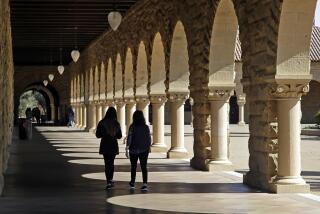Who Gets to Decide What Is Banned?
- Share via
Charles Krauthammer’s essay on censorship is a cogent argument for limitations of public expression (“We All Believe in Censorship,” April 29). However, I am uncertain as to who should interpret the limits. I sense a leaning toward the Hamiltonian principle that people of education and property know best what is good and proper.
Newspapers and television are meant to appeal to a wide family audience. Self-censorship is called for, guided by community standards and the sense of good taste of the editors. Museums, libraries and similar centers have a more limited audience and can advise visitors of the type of material to be seen there. A problem with community censorship of these centers is the lack of consensus of standards of what is acceptable. Anthony Comstock was an outspoken activist and was influential in imposing certain standards that did not reflect universal American views. “Banned in Boston” became a catch phrase for ridicule of public protection of private morality. Remember when the movie “The Moon Is Blue” was denied the approval of the Legion of Decency because the words virgin and seduce were used?
One of the chief standards in censorship seems to be nudity and erotic art. My wife and I walked two or three miles in Florence to see a larger-than-life-size statue of a naked man. In the Vatican, we craned our necks to look at the ceiling of the Sistine Chapel where nudes are to be found amid the panorama. I felt intellectually enriched by the experience. I have not seen the Mapplethorpe show, although I have seen some photos by Mapplethorpe in bookstores. Some of the photographs were very repellent to me; in others I saw beauty. I believe that it would be wrong for anyone to tell me that I could not view either David or Mapplethorpe.
I have serious reservations about whether tax funds should be subsidizing art, music and literature, just as I have reservations about spending on “Star Wars.” If funds are to be granted, those funds should be without strings. Otherwise, the artists become propagandists for the politicians and bureaucrats dispensing the funds. Carried to extremes, it leads to burning of books and adding fig leafs to statues.
RAY BRACY
Tustin
More to Read
The biggest entertainment stories
Get our big stories about Hollywood, film, television, music, arts, culture and more right in your inbox as soon as they publish.
You may occasionally receive promotional content from the Los Angeles Times.










